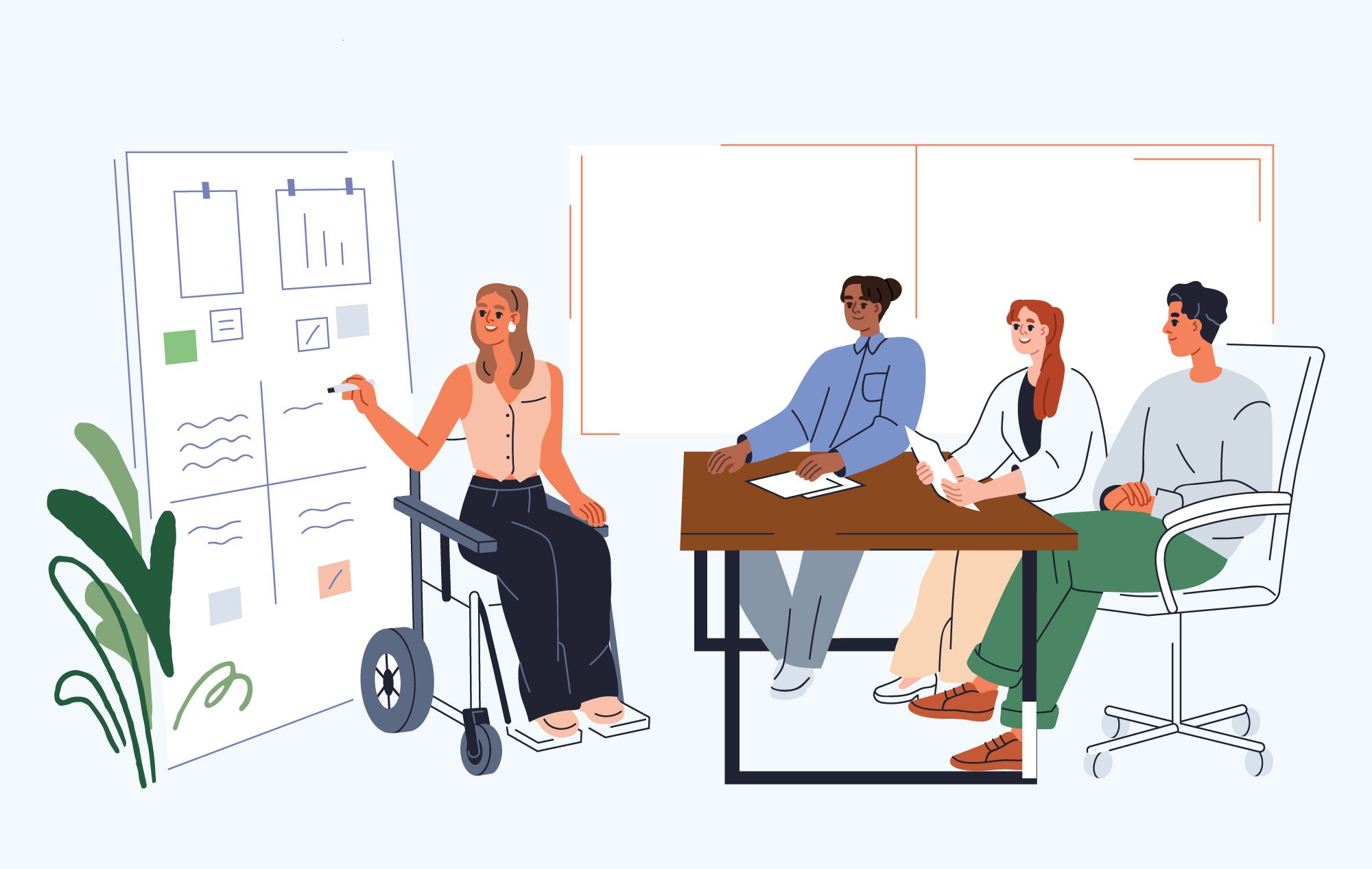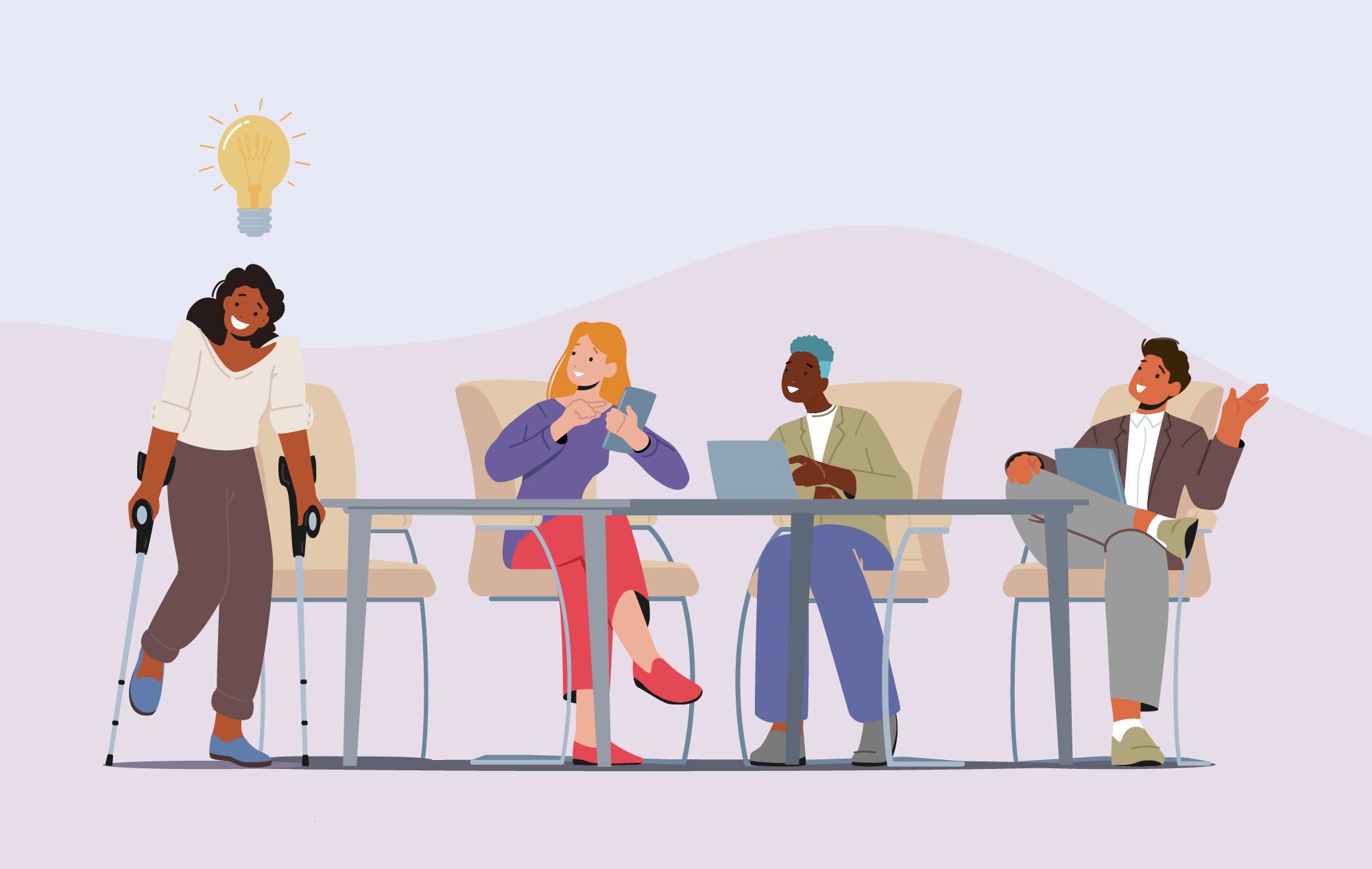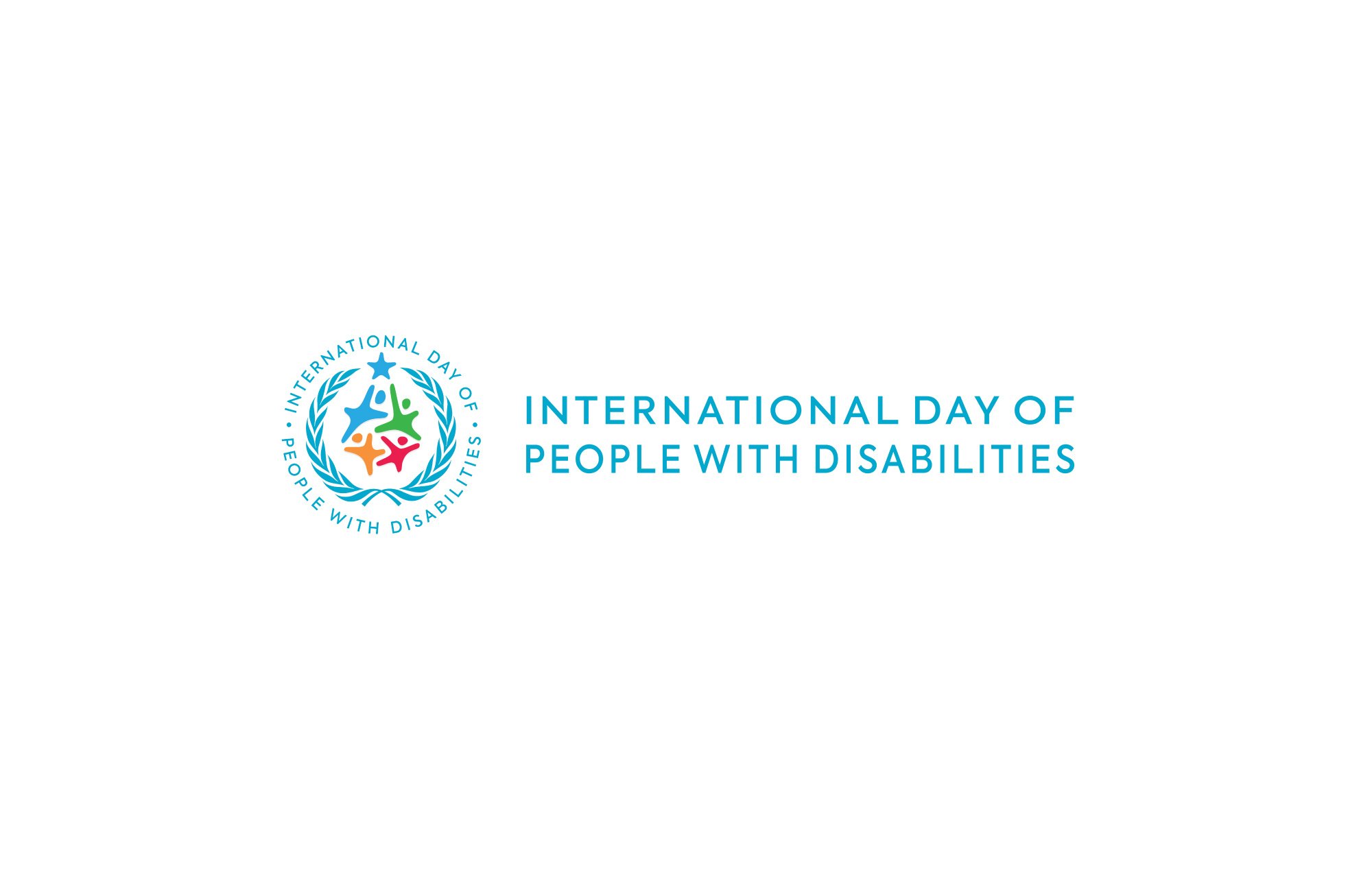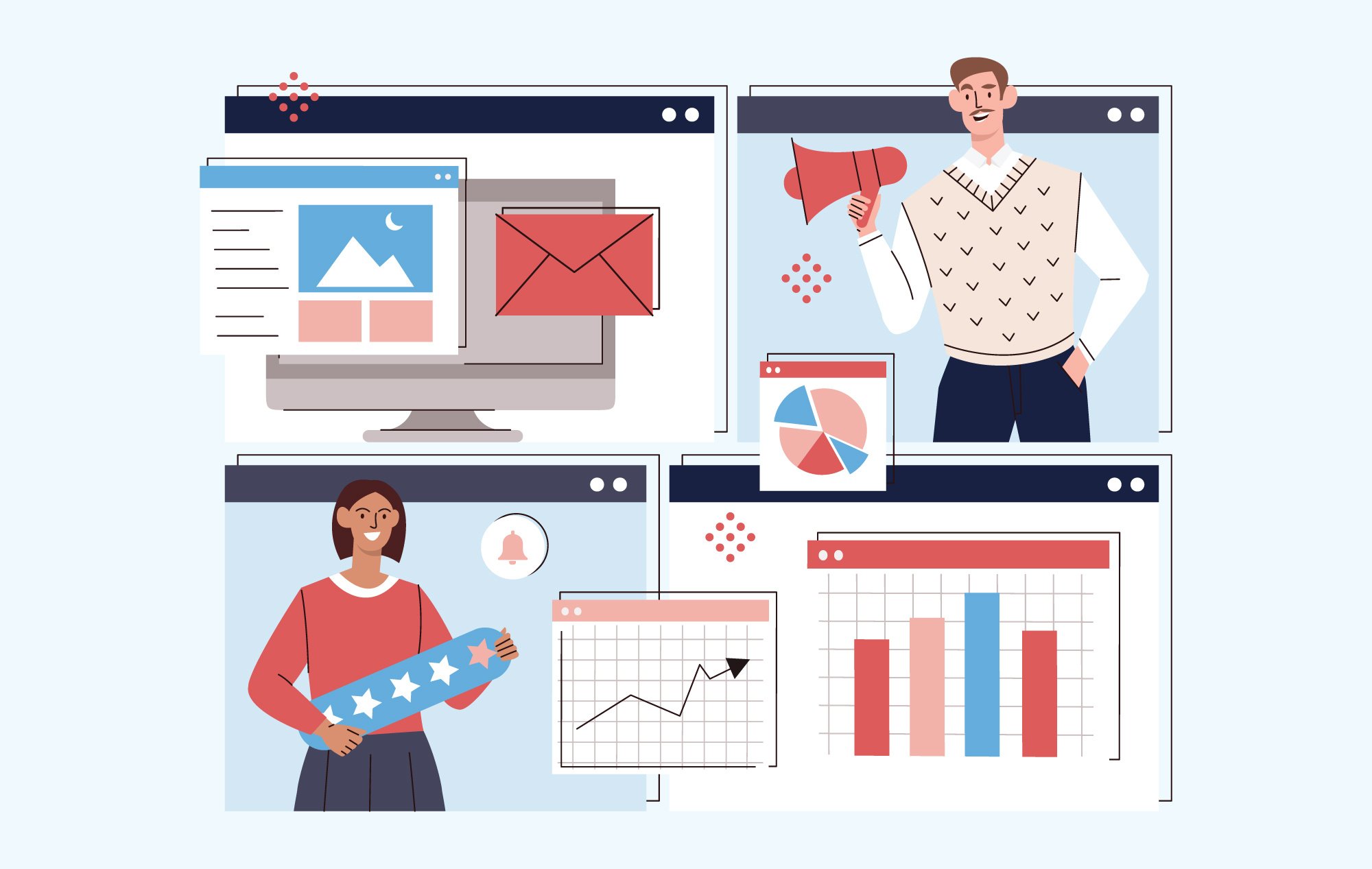Key takeaways:
- Accessibility barriers hinder job opportunities for professionals with disabilities, contributing to a persistent employment gap, with inaccessible websites, workplaces, and biases exacerbating the problem.
- The U.S. Department of Labor's theme for National Disability Employment Awareness Month 2024, "Access to Good Jobs for All," highlights the importance of equitable, inclusive workplaces, calling for better recruitment, accommodations, and respect for workers with disabilities.
- Creating accessible workplaces benefits both employees and businesses, improving employee well-being while enhancing innovation, reputation, and consumer trust by fostering a more inclusive culture.
Finding a job that aligns well with your skill set and career goals is often difficult. It's all the more maddening to encounter a promising position only to discover the prospective employer has little regard for accessibility.
This leaves professionals with disabilities with few options for meaningful employment.
Inaccessible websites discourage job applicants. Unaccommodating workplaces undermine an employee’s well-being. Persistent biases against people with disabilities result in a large percentage of the population remaining unemployed or stuck in harmful working environments.
After all, one in four Americans have a disability.
The U.S. Department of Labor (DOL) commemorates October as National Disability Employment Awareness Month (NDEAM), celebrating the societal contributions of people with disabilities and drawing attention to these persistent workplace challenges. Globally, this month and mission is recognized simply as “DEAM.”
‘Access to Good Jobs for All’
The DOL focuses on creating and enforcing federal labor laws and safety regulations and manages working conditions and labor rates. Numerous marginalized groups throughout the United States, including those with disabilities, experience discrimination and lack access to worthwhile jobs.
The government agency wants to rectify that.
“Our theme in 2024, ‘Access to Good Jobs for All,’ speaks to our commitment to expand the number of employment opportunities for people with disabilities and the quality of those opportunities,” announced Assistant Secretary for Disability Employment Policy Taryn M. Williams. “Good jobs change lives and all workers—including disabled people—deserve the opportunity to prepare for success in high-quality, good-paying jobs in workplaces free of discrimination.”
A sound economy is built on equitable jobs and high-quality conditions for all workers. The DOL has identified eight principles as part of its Good Jobs Initiative:
- Qualified job applicants are recruited from among marginalized or underserved groups.
- Full-time and part-time workers are provided family-sustaining benefits that promote economic security and upward mobility.
- All workers have access to jobs where they are respected, treated fairly, and empowered, regardless of their disability status or marginalized identities.
- Workers are empowered to form and join unions without fear of retaliation.
- Workers have a safe, healthy, and accessible workplace informed by input from team members and their peers.
- All feel a sense of belonging, are valued, and contribute meaningfully to the organization’s work culture.
- Workers are paid a stable and predictable living wage and pay is fair, transparent, and equitable.
- Workers have equitable opportunities and tools to progress to future good jobs within their organizations or outside them.
This push for “access to good jobs for all” will require rather dramatic changes in corporate America’s workplace cultures and policies. For instance, cloud-based software company Salesforce understands this and has made significant progress toward transforming its company culture in tandem with its many equality initiatives.
The two are deeply intertwined.
“You can't have equality without accessibility,” says Catherine Nichols, Vice President of the Office of Accessibility at Salesforce. “So if we're all going to work from equal ground, and all be a part of the workforce and the system, then there needs to be access. So if we're not going to have the access, we really can't have the equality.”
The Disability Employment Gap
The unemployment rate for professionals with disabilities is one of the primary benchmarks for assessing how much progress is being made toward expanding “access to good jobs.”
At present, the disparity is rather disheartening.
According to August 2024 disability employment statistics from the U.S. Bureau of Labor Statistics and Office of Disability Employment Policy, the unemployment rate for people living with disabilities was 8.3 percent—up from 7.2 percent in 2023—while 4.2 percent for those without a disability. The labor force participation rate for those with disabilities during this time was 23.9 percent—down from 24.2 percent the previous year—and 68.3 percent for those without. In 2023, three-fourths of people living with a disability were not even in the labor force, compared with only one-third of those with no disability.
This so-called “disability employment gap” is due, largely, to inaccessible workplace culture and misguided policies. Rigid policies such as in-office-only work, a lack of accommodations, and biases against professionals with disabilities exacerbate the rate of professionals with disabilities without a job.
Even for those able to overcome accessibility barriers and become employed, it’s not a given that the job they accept is a good one.
How to Create More Accessible Workplaces
To ensure “access to good jobs for all,” organizations must create workplaces that foster inclusion and prioritize accessibility, removing the barriers that undermine the emotional well-being of professionals with disabilities and hinder their professional development.
It’s as simple as that.
Kurt Iobst, an accessibility evangelist and Senior Success Manager at Salesforce, describes the emotional exhaustion he experiences as a neurodivergent professional working in a corporate world not designed for him. He speaks specifically to neurodivergent masking, a term referring to the ways people conceal or suppress elements of their neurodivergent traits or conditions to fit in with workplace or societal norms.
“That just adds a layer of burden,” he says. “You know that lead vest we wear at the dentist when taking an X-ray? It’s like wearing five or 10 of those while trying to exist, while trying to do our best work.”
If a professional with disabilities is drained daily by inaccessible workplaces, it won’t be long before they burn out, quit, or become unfairly overburdened that they can’t perform their role effectively and are fired.
Practices That Make Workplaces More Accommodating
There are numerous straightforward and concrete things employers can do to design more accommodating workplaces and recruit more professionals with disabilities.
Post job openings on more than just the traditional platforms. Inclusively is one such alternative, “help[ing] all employees reach their potential and provide access for employees with apparent and non-apparent disabilities.” If you want to bring more professionals with disabilities into your company, then you need to go where they are.
Ask job applicants about what accommodations they may need. This signal attracts professionals with disabilities, demonstrating your organization’s commitment to greater accessibility. The more people living with disabilities that are on your team, the more likely you’ll have the knowledge needed to bridge gaps about disabled experiences.
Provide remote work options. This is the surest way to make good jobs available for all people, regardless of their disability status. Time and again, remote work has proven to be a great equalizer, eliminating many of the barriers that keep professionals with disabilities from gainful employment, such as physical challenges commuting to an office, distracting workspaces, and inflexible environments that hinder a person’s ability to attend to their medical needs.
Offer job candidates the choice between an in-person or virtual interview. This enlarges your talent pool and similarly removes certain accessibility barriers common to in-person interviews.
Ensure your leadership includes professionals with disabilities. While disabilities are certainly not always visible, having leaders who live with disabilities signals your commitment to accessibility and helps your organization stay better attuned to the needs of current and prospective employees.
Leadership can also set an example of empathy that spreads throughout the organization, encouraging team members to be more mindful of the barriers their peers face in the workplace. Kurt Iobst shares that sentiment, noting that “leadership that openly discloses their disability, struggles, and success strategies helps foster empathy and understanding throughout the organization.”
Embrace digital inclusion. That means your electronic devices and online platforms are fully accessible to people with disabilities, especially for those who rely on assistive technology such as screen readers. If they’re not, you will hamper your employees’ abilities to do their jobs effectively. Plus, you will deter other professionals with disabilities from even considering positions at your organization.
Abiding by the Web Content Accessibility Guidelines (WCAG) ensures your digital products and platforms remain accessible to all, regardless of disability status. These protocols range from proper text color contrast and font size to rules about background audio and hovering functionality
Implement employee training programs about accessibility and inclusion. By educating team members about social etiquette around disabilities, accessibility barriers often faced by peers, and tangible ways to nurture a more inclusive culture, you make the workplace a more forward-facing environment.
It’s Not Just a Moral Imperative
We have a moral duty to eliminate the barriers that prevent professionals with disabilities from accessing good jobs. The disabilities community has a long, tragic history of being excluded, belittled, discriminated against, and marginalized. Ensuring all people can fully participate in the economy goes a long way in correcting this troubled past and creating a more equitable future.
There’s also a strong business case for greater accessibility.
Adopting a more accessible workplace expands your company’s reach and better connects it with people living with disabilities. In fact, 90 percent of consumers say “they would prefer to give their business to companies that hire individuals with disabilities,” according to a U.S. Department of Labor survey.
The purchasing power of professionals with disabilities, which encompasses more than 20 million people, has significant implications for businesses. More and more consumers want to buy from brands that reflect their deepest-held values, such as accessibility, inclusion, and belonging.
Plus, employees with disabilities are uniquely positioned to problem-solve because they are frequently forced to interact with a world not designed for them. That’s a huge asset for companies looking to innovate or outperform their competitors.
By removing workplace barriers, you give more people the opportunity to develop a meaningful career and live more independently.
Salesforce is a founding partner of InclusionHub, a resource for digital accessibility dedicated to helping businesses prioritize digital inclusion. Be sure to check out all The InclusionHub Podcast’s episodes and corresponding transcripts. Happy Disability Employment Awareness Month!






Leave a Comment